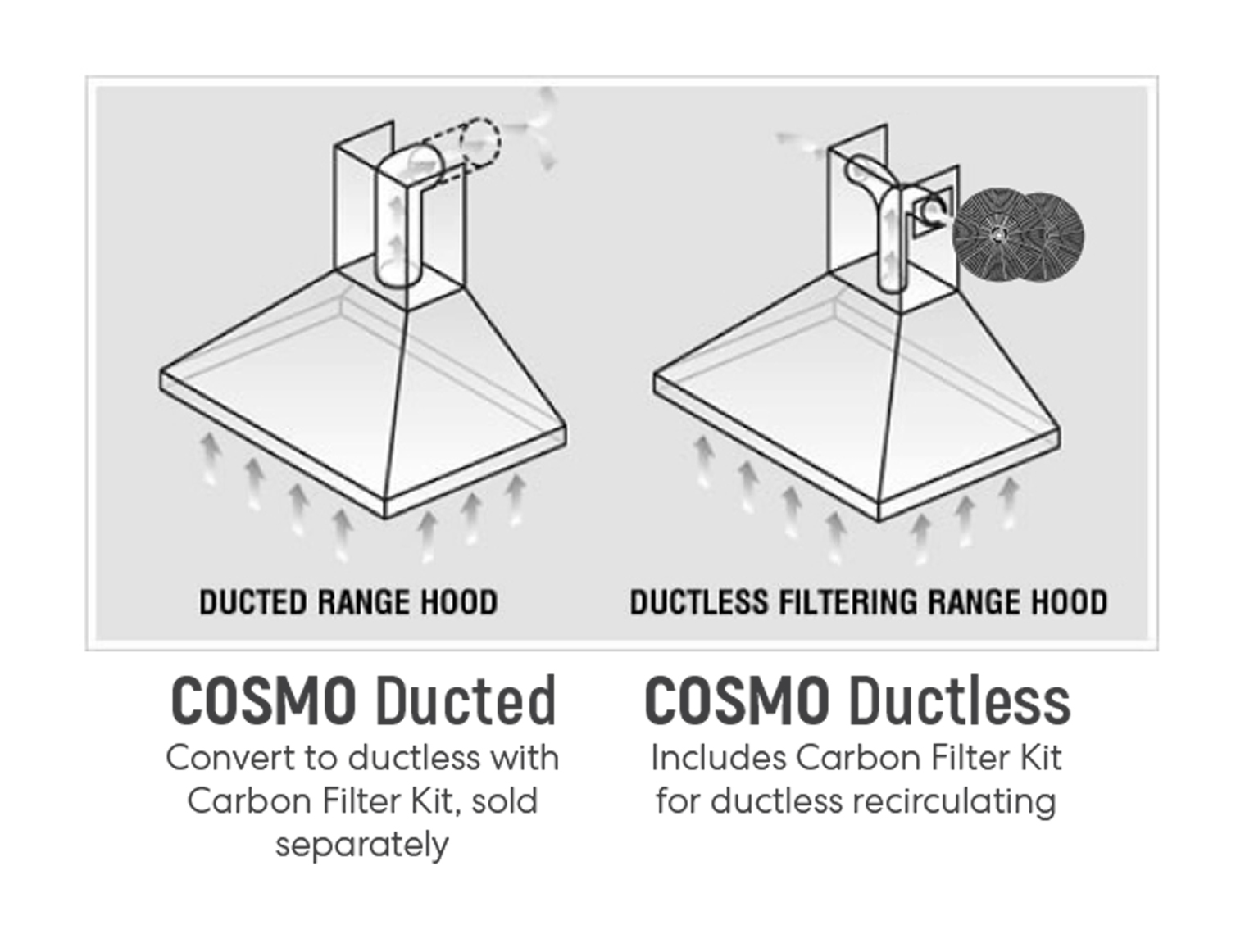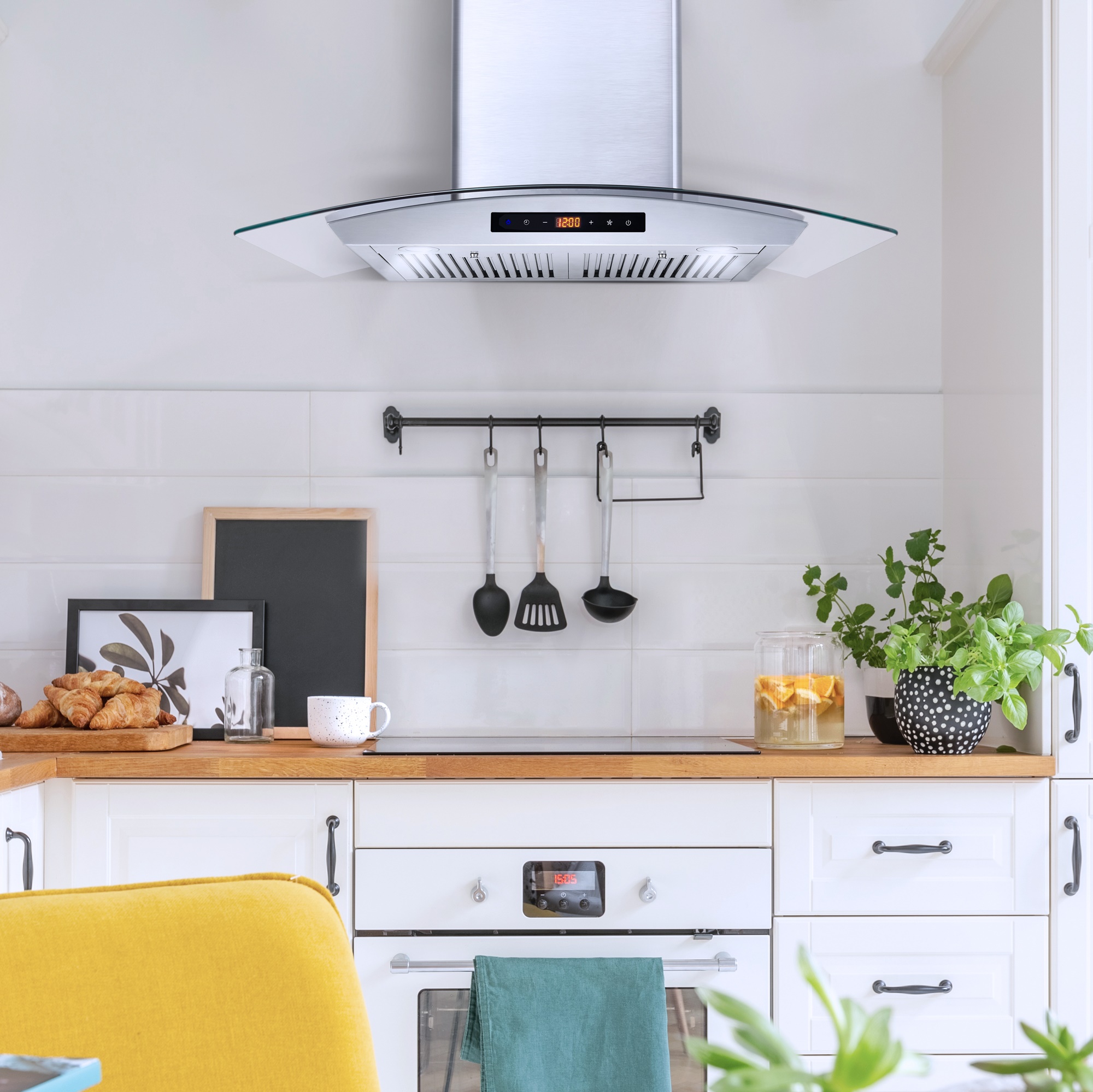Ducted and Ductless Range Hoods–What’s the Difference?
All range hoods are not created equal. It’s important to know the differences when deciding which range hood would work best for your kitchen. Searching through the options, you may come across some terms you’re unfamiliar with: ducted and ductless. To better understand these functions, let’s establish the main function of a range hood: moving odors, smoke or fumes away from your kitchen when cooking meals.
Ducted Range Hoods
Ducted range hoods require a duct inside a kitchen that connects to the outside. The range hood pulls the air up through the duct and away from the kitchen. The main restriction here is the location of the duct, and how the kitchen is built. If you’d like to have your range hood in another location where there is no duct available, then a ducted range hood may not work for you. Humidity is a key difference here. Since the air is being moved outside, you would have a dryer air quality than a ductless option.
Ductless Range Hood
Ductless range hoods recirculate air back into the kitchen. They require an additional filter, usually carbon activated. One of the biggest advantages of ductless use is that they can be placed anywhere in the kitchen. Ductless range hoods can contribute to higher humidity and heat levels in kitchens since the same air is remaining in the area. Filters do have to be replaced, usually once or twice a year, which can lead to additional costs. Ductless range hoods often require more power to recirculate the air, which may create higher noise levels.


